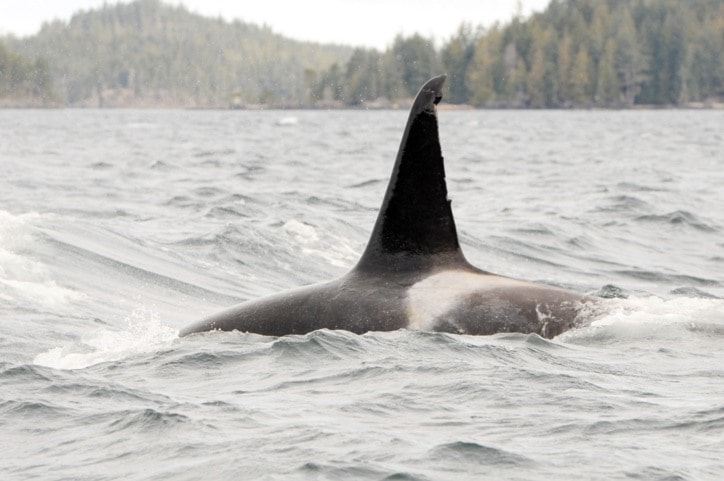Many Port McNeill residents were whale watching on the evening of March 30th and they didn’t have to leave their homes to do so!
A group of 12 offshore killer whales was extremely active right in front of the community; even repeatedly spyhopping (popping their heads out of the water). To have whales this visible near your home is a great gift but, all the more remarkable is that these were very mysterious, threatened whales.
“Offshores” are a distinct type of killer whale that does not mate with the killer whales that eat marine mammals (“transients”) nor with those that feed on fish, mostly salmon (“residents”).
About 300 individual offshores have been photographed but studying them is usually very difficult. As their name suggests, they are most often near the continental shelf and they are very wide-ranging. Offshores weren’t even identified till 1979 and weren’t confirmed to be a distinct population until 1989.
So little is known about them. Only very recently did the research of Dr. John Ford et al illuminate what the whales might be doing around the continental shelf and why their teeth are worn down so much more than the teeth of other killer whales. DNA analysis of prey samples confirmed that the diet of offshores includes Pacific sleeper sharks (4m+), a species with very abrasive skin. The offshores’ scarred bodies served as a further hint that they may do battle with sharks.
Inshore sightings of these whales provide a very unique opportunity to learn more about them e.g. what they are eating when inshore and why they are so full of toxins. Luckily one of the world’s leading killer whale researchers, Graeme Ellis, was able to join the offshores in front of Port McNeill. He was alerted to their presence by the superstars at the Orca Lab who first heard these whales’ unique vocals in the Robson Bight area on March 25th.
I too was extraordinarily privileged to be able to contribute some ID photographs from sightings on March 27th and . . . I don’t think I’ll ever quite be the same after watching these mystery whales surfing in 3’ waves.
It all just goes to show that you never know who you’ll meet on Northern Vancouver Island!
Jackie Hildering is a biologist, avid scuba diver, and marine educator who lives in Port McNeill. Learn more about the offshores at www.themarinedetective.ca.
